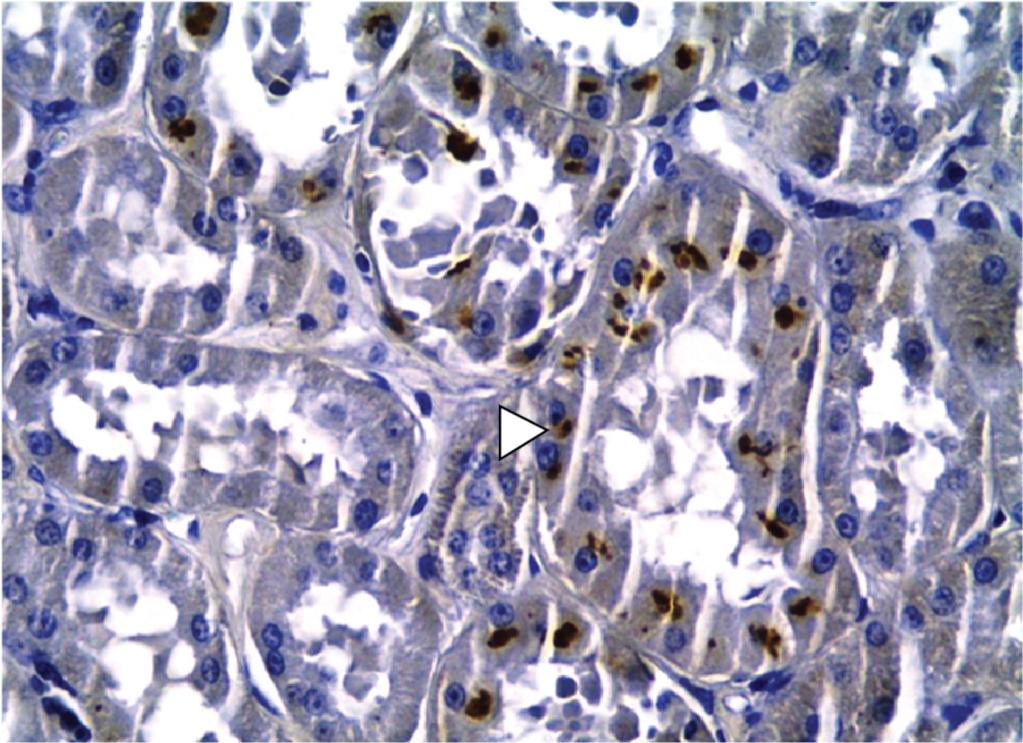The aim of this study was to assess histological alterations and perform immunolabeling of Leishmania infantum in the kidneys and urinary bladder of naturally infected dogs. Twenty-five urinary bladder and kidney samples of serologically positive animals (ELISA S7® Biogene and IFAT ≥ 1:40 - Biomanguinhos/Fiocruz) were analyzed by means of immunohistochemical and histological techniques. Cystitis was found in 44% (11/25) of the bladder samples and membranoproliferative glomerulonephritis in 92% (23/25) of the kidney samples. Immunolabeling of the parasite revealed that 32% (8/25) of the bladders and 8% (2/25) of the kidneys were positive. In conclusion, the immunohistochemical technique is a useful tool for detecting amastigote forms of L. infantum in organs of infected dogs. In addition, this was the first report of detection of amastigote forms ofL. infantum in the bladders of dogs.
Leishmania infantum ; immunohistochemistry; nephropathy; cystitis; dog




